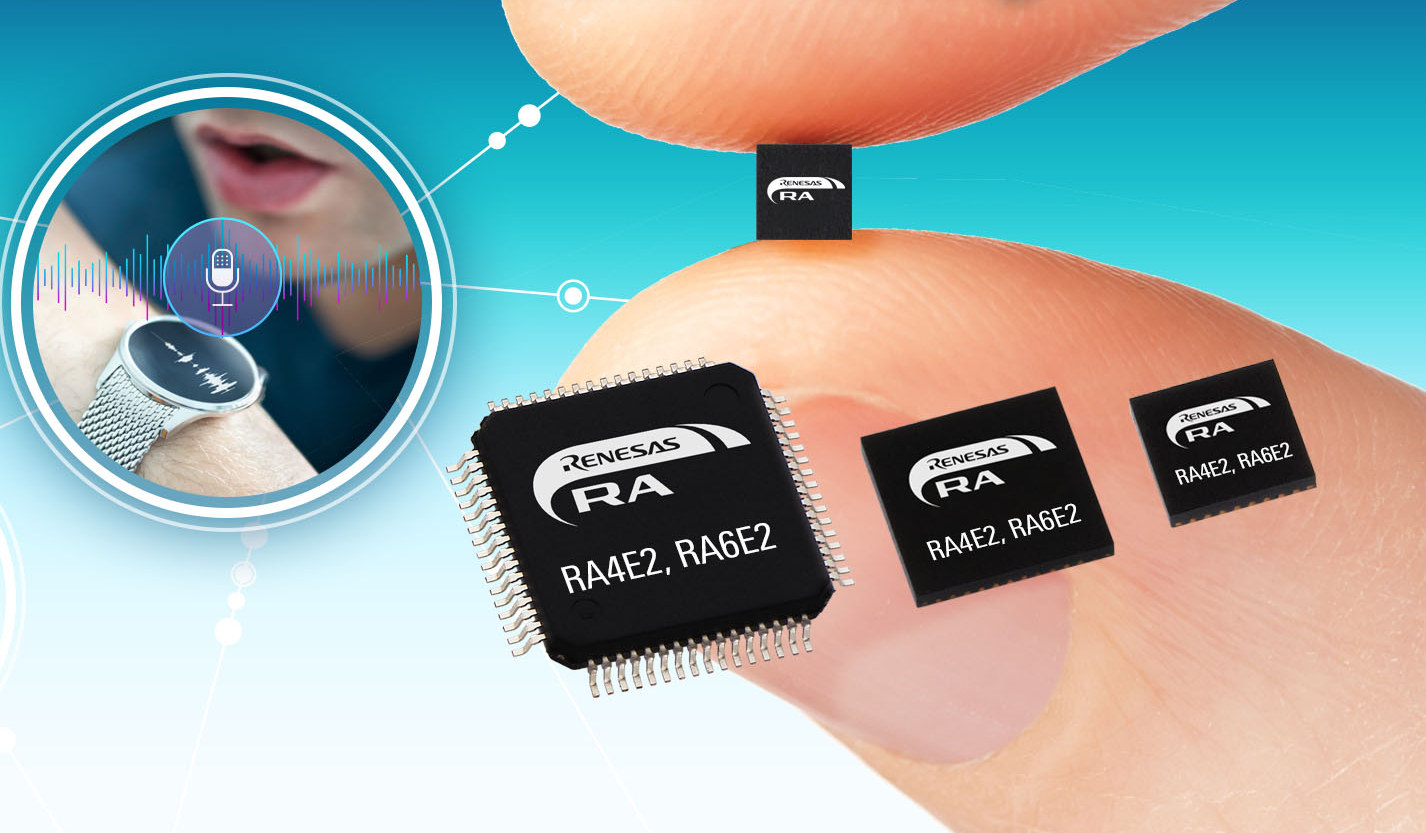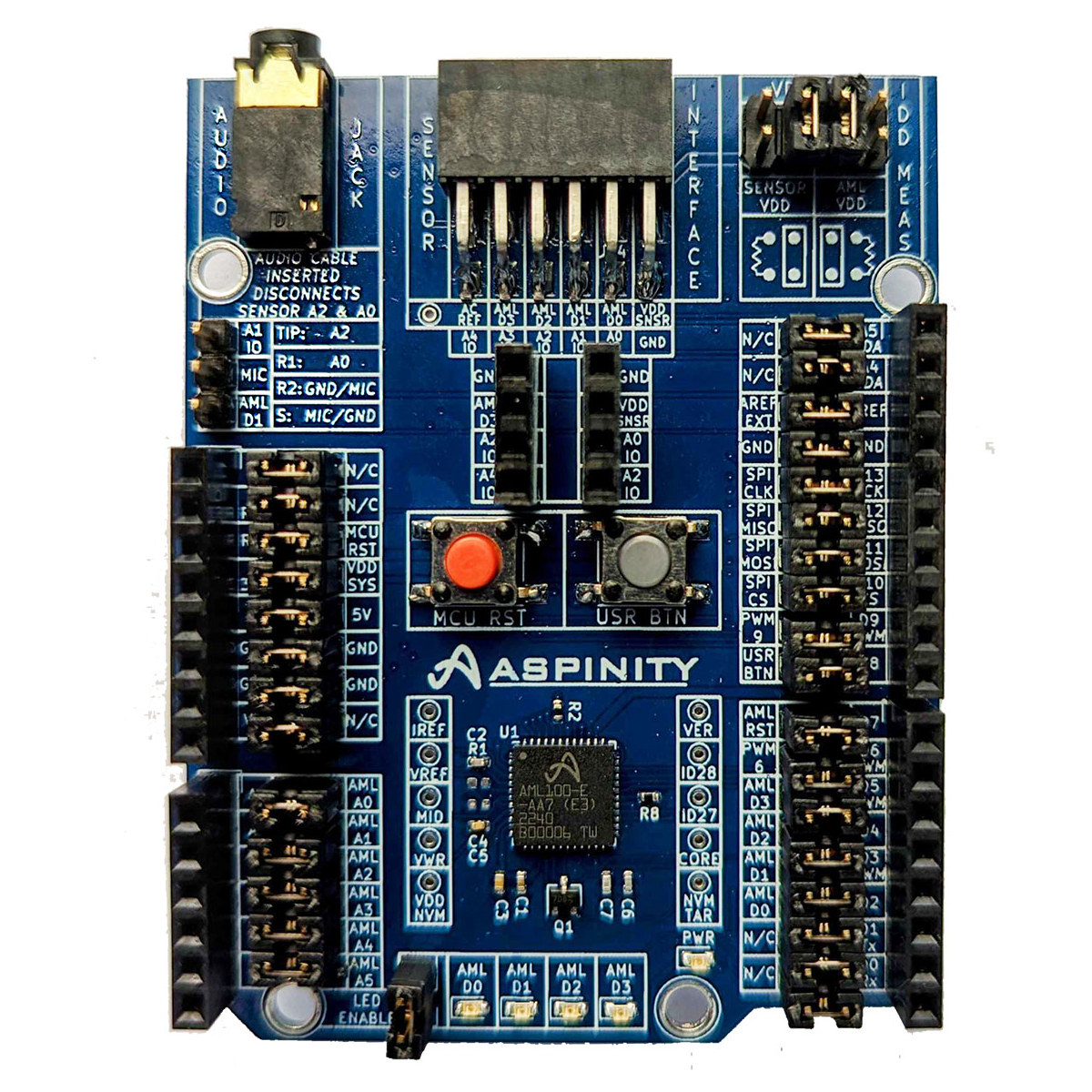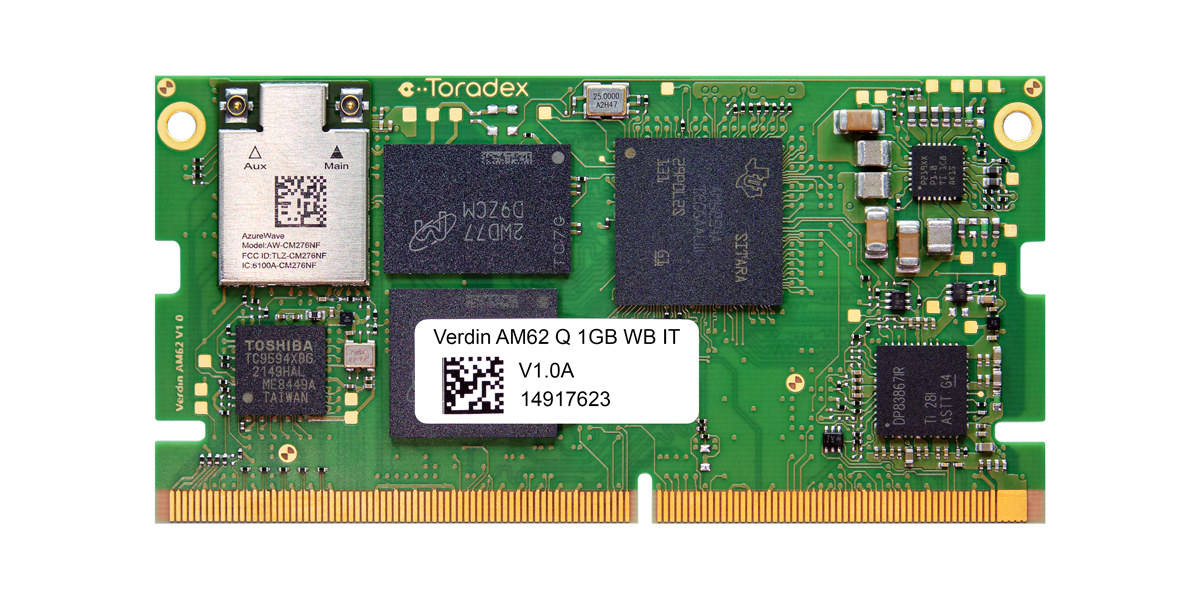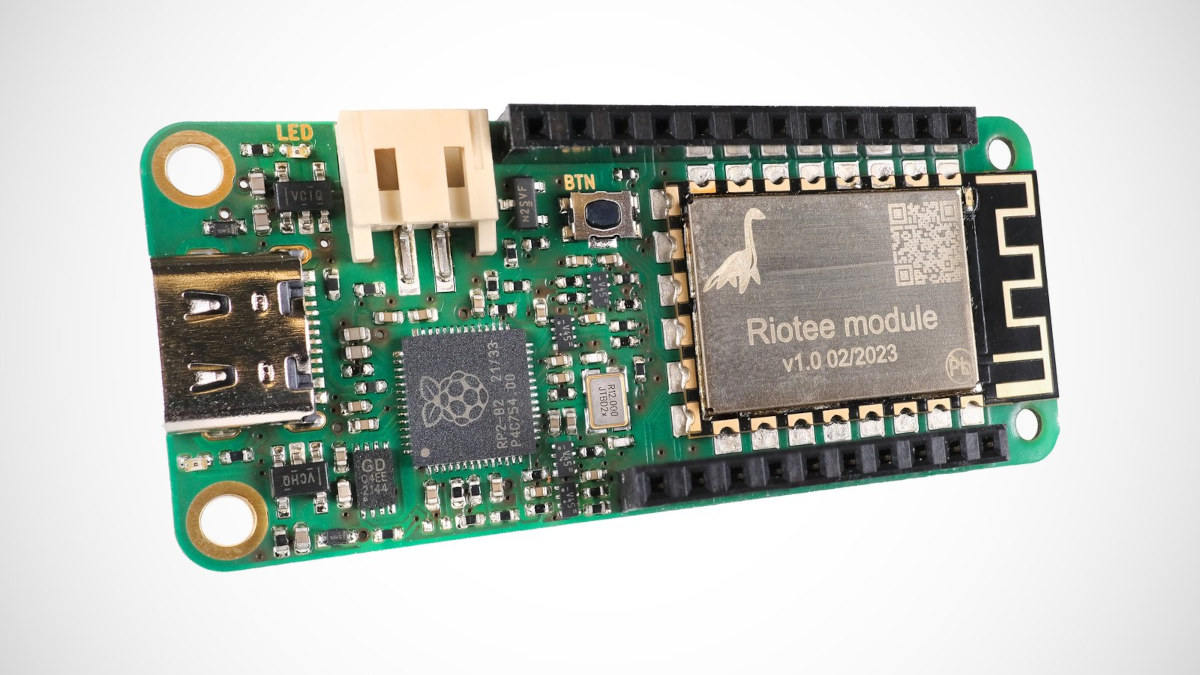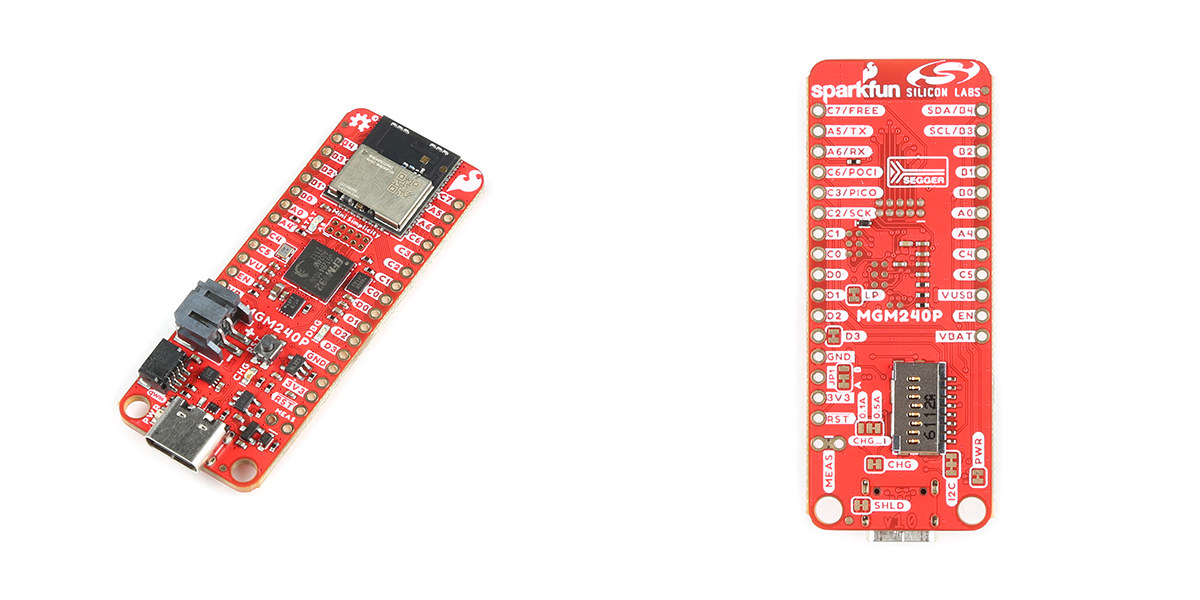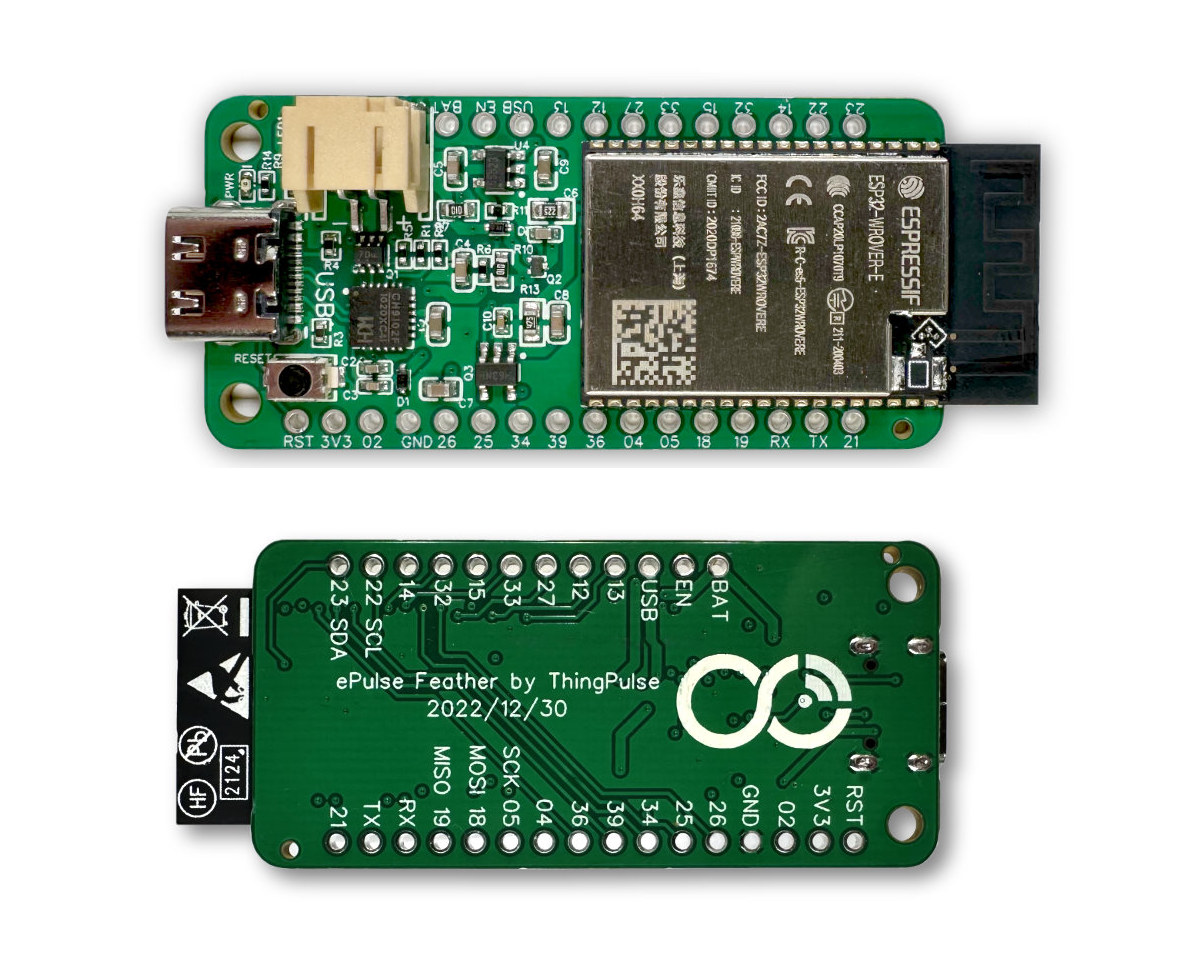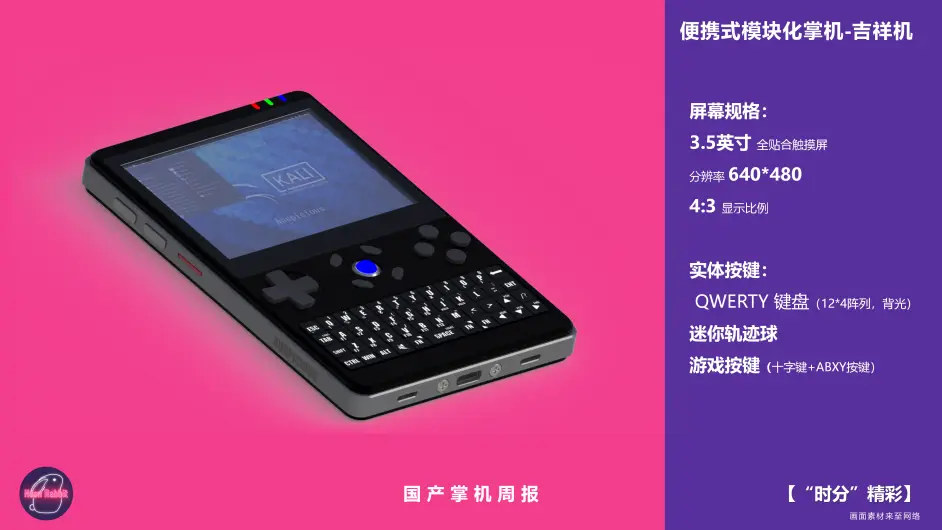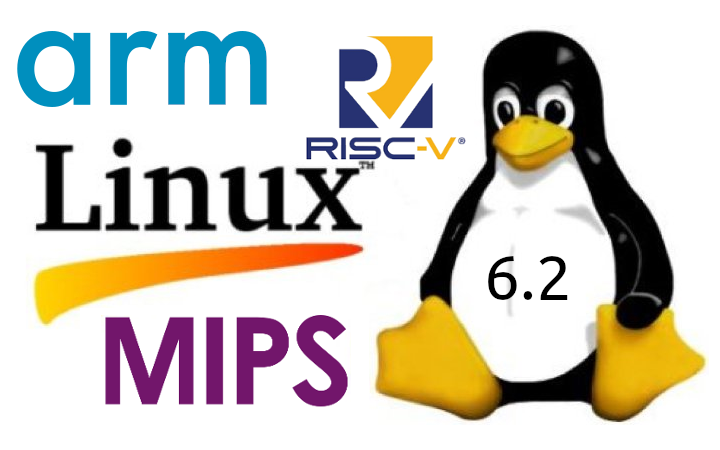Renesas Electronics has added two new groups to its 32-bit RA family of microcontrollers (MCUs) with the 100 MHz RA4E2 and 200 MHz RA6E2 Arm Cortex-M33 microcontrollers designed for “high-performance applications” in small packages such as sensing, gaming, wearables, and appliances. The new microcontrollers are equipped with 40 KB SRAM, 128 KB or 256 KB flash, and integrate various on-chip interfaces such as CAN FD, USB, QSPI, SSI, and I3C interfaces to offer an easy upgrade path for products based on other members of the Renesas RA Family. Renesas RA4E2 MCU group Both the RA4E2 and the RA6E2 are the most cost-effective microcontroller groups of the RA family with integrated CAN FD, with the RA4E2 group especially well-suited to cost-sensitive applications and other systems requiring relatively high performance, low power consumption, and/or small package size. RA4E2 key features: CPU – Arm Cortex-M33 core with TrustZone @ up to 100 MHz […]
Aspinity AB2 AML100 Arduino Shield supports ultra-low-power analog machine learning
Aspinity AB2 AML100 is an Arduino Shield based on the company’s AML100 analog machine learning processor that reduces power consumption by 95 percent compared to equivalent digital ML processors, and the shield works with Renesas Quick-Connect IoT platform or other development platforms with Arduino Uno Rev3 headers. The AML100 analog machine learning processor is said to consume just 15µA for sensor interfacing, signal processing, and decision-making and operates completely within the analog domain offloading most of the work from the microcontroller side that can stay its lowest power state until an event/anomaly is detected. Aspinity AB2 AML100 Arduino Shield specifications: ML chip – Aspinity AML100 analog machine learning chip Software programmable analogML core with an array of configurable analog blocks (CABs) with non-volatile memory and analog signal processing Processes natively analog data Near-zero power for inference and events detection Consumes <20µA when always-sensing Reduces analog data by 100x Supports up […]
Toradex Verdin AM62 – An entry-level Sitara AM623/AM625 SoM for Industry 4.0, Smart Cities, Healthcare…
Toradex Verdin AM62 is a system-on-module based on Texas Instruments AM62 Cortex-A53/M4 processor with up to 1GB LPDDR4 RAM and 8GB eMMC flash that is the most affordable system-on-module from the company’s Verdin family. The module also comes with a Gigabit Ethernet PHY and an optional WiFi 5 and Bluetooth 5 module and exposes various interfaces through its edge connector such as dual Gigabit Ethernet, MIPI DSI and LVDS display interfaces, a MIPi CSI-2 camera interface, and CAN FD, and more. Toradex Verdin AM62 specifications: SoC – Texas Instruments Sitara AM623/AM625 with up to 4x Arm Cortex-A53 cores @ 1.4GHz, 1x Arm Cortex-M4F @ 400MHz, optional 3D GPU with support for OpenGL 3.x/2.0/1.1 + extensions, Vulkan 1.2 (AM625 only) System Memory – Up to 1GB LPDDR4 (16-bit) Storage – Up to 8GB eMMC flash Networking Texas Instruments DP83867IRRGZR industrial-grade Gigabit Ethernet PHY Optional Wi-Fi 5 and Bluetooth 5 module (AzureWave […]
Riotee batteryless stackable IoT board embeds an nRF52833 module (Crowdfunding)
Nessie Circuits’ Riotee board features a Riotee module based on Nordic nRF52833 WiSoC with a 2.4 GHz radio that targets batteryless IoT applications thanks to a stackable design taking a capacitors add-on board and a solar panel. Batteries introduce maintenance costs and environmental issues with millions of batteries disposed of every day. That’s why companies are trying to provide solutions for batteryless IoT designs such as the Everactive batteryless IoT devkit or Telink energy harvesting wireless module for remote controls. The Riotee module, board, and ecosystem also aim to play their part in reducing the use of batteries in wireless IoT devices. Riotee board specifications: Riotee module Wireless MCU – Nordic nRF52833 Arm Cortex-M4F microcontroller @ 64 MHz with 512 kB flash, 128 kB RAM, 2.4 GHz radio Memory – 128 kB of non-volatile memory (MSP430FR5962 FRAM) for “automatic checkpointing of application state” Castellated holes with 11x GPIOs including two […]
SparkFun Thing Plus Matter – MGM240P board supports Matter, Zigbee, OpenThread, and Bluetooth Low Energy 5.3
SparkFun Thing Plus Matter – MGM240P board targets the development of applications using the Matter IoT protocol and features the MGM240P module based on Silicon Labs EFR32MG24 Arm Cortex-M33 wireless microcontroller with an 802.15.4 radio for Zigbee and OpenThread plus a Bluetooth Low Energy (BLE) 5.3 radio. The board also offers two rows of I/Os for upto 21 GPIOs and a Qwiic connector for expansion, another EFRM32 MCU acting as a J-link debugger, a microSD card, and can be powered via USB-C or a LiPo battery. SparkFun Thing Plus Matter – MGM240P specifications: MGM240P wireless module SoC – Silicon Labs EFR32MG24 microcontroller CPU – 32-bit Arm Cortex-M33 @ 39 MHz (MCU/module specs say up to 78 MHz, but maybe it’s clocked lower in this board for some reason, maybe lower power consumption?) Memory/Storage – 1536kB Flash Memory, 256kB RAM Wireless – 802.15.4 wireless protocols (Zigbee and OpenThread) and Bluetooth Low […]
ePulse Feather ESP32 development board is optimized for low power consumption (in deep sleep)
Thingpulse ePulse Feather is an ESP32 development board following Adafruit’s Feather form factor and optimized for low power with 12 to 27 uA deep sleep power consumption. The board is based on the ESP32-WROVER with 8MB Flash and 8MB SPRAM and comes with a USB-C connector for charging the battery and programming through a CH9102F UART chip, as well as the I/Os headers provided by the Feather form factor. The board can be especially useful in battery-operated WiFi remote controls for home automation or other purposes that sleep most of the time until the user presses one of the buttons. ThingPulse ePulse Feather specifications: Wireless module – Espressif Systems ESP32-WROVER-E-N8R8 module with ESP32-D0WD-V3 or ESP32-D0WDR2-V3 dual-core microcontroller @ 240 MHz with 8MB QSPI flash, 8MB QSPI PSRAM USB – 1x USB Type-C port for power/charging and programming via CH9102F UART to TTL chip. Expansions – 12-pin + 16-pin headers with […]
Auspicious Machine modular handheld Linux PC with keyboard takes various Arm-based SoMs
The “Auspicious Machine” may look like a Blackberry phone, but it’s actually a handheld Linux PC with a built-in QWERTY keyboard and a 3.5-inch display that can be powered by a range of system-on-modules (SoM). The computer, whose name can also be translated as the “Auspicious Phone”, can be used as a Linux terminal with GPIO control, and for gaming with Linux distributions such as Batotera or RetroBat with the D-Pad and ABXY buttons found on the device. Auspicious Machine specifications: Supported SoMs Bigtreetech CB1 with Allwinner H616 quad-core Cortex-A53 processor and 1GB DDR4 Raspberry Pi CM4 with Broadcom BCM2711 quad-core Cortex-A72 processor, up to 8GB LPDDR4, up to 32GB eMMC flash Radxa CM3 with Rockchip RK3566 quad-core Cortex-A55 processor, up to 4GB LPDDR4, up to 64GB eMMC flash Banana Pi BPI-CM4 with Amlogic A311D octa-core Cortex-A73/A55 processor with 4GB LPDDR4 and 16GB eMMC flash Storage – MicroSD card socket […]
Linux 6.2 release – Main changes, Arm, RISC-V, and MIPS architectures
Linux 6.2 has just been released with Linus Torvalds making the announcement on LKML as usual: So here we are, right on (the extended) schedule, with 6.2 out. Nothing unexpected happened last week, with just a random selection of small fixes spread all over, with nothing really standing out. The shortlog is tiny and appended below, you can scroll through it if you’re bored. Wed have a couple of small things that Thorsten was tracking on the regression side, but I wasn’t going to apply any last-minute patches that weren’t actively pushed by maintainers, so they will have to show up for stable. Nothing seemed even remotely worth trying to delay things for. And this obviously means that the 6.3 merge window will open tomorrow, and I already have 30+ pull requests queued up, which I really appreciate. I like how people have started to take the whole “ready for […]


